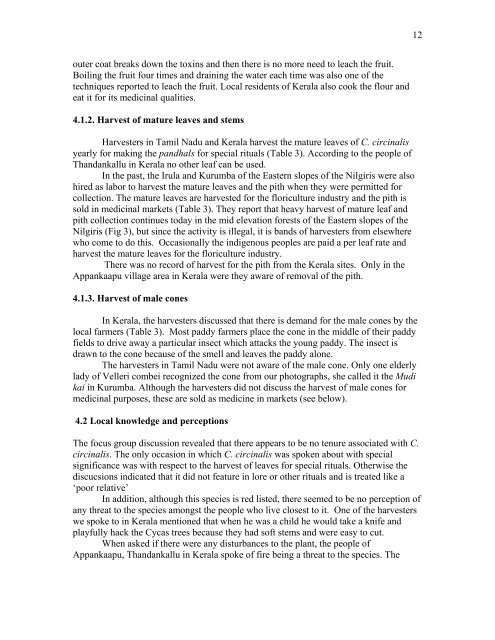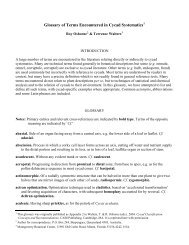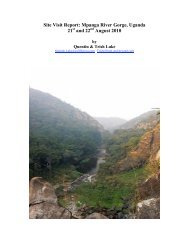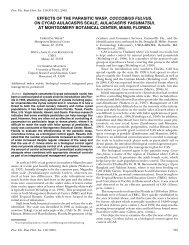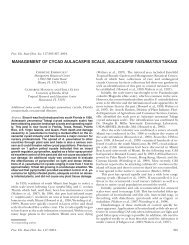Cycas-circinalis-cas.. - Cycad Specialist Group
Cycas-circinalis-cas.. - Cycad Specialist Group
Cycas-circinalis-cas.. - Cycad Specialist Group
Create successful ePaper yourself
Turn your PDF publications into a flip-book with our unique Google optimized e-Paper software.
outer coat breaks down the toxins and then there is no more need to leach the fruit.<br />
Boiling the fruit four times and draining the water each time was also one of the<br />
techniques reported to leach the fruit. Local residents of Kerala also cook the flour and<br />
eat it for its medicinal qualities.<br />
4.1.2. Harvest of mature leaves and stems<br />
Harvesters in Tamil Nadu and Kerala harvest the mature leaves of C. <strong>circinalis</strong><br />
yearly for making the pandhals for special rituals (Table 3). According to the people of<br />
Thandankallu in Kerala no other leaf can be used.<br />
In the past, the Irula and Kurumba of the Eastern slopes of the Nilgiris were also<br />
hired as labor to harvest the mature leaves and the pith when they were permitted for<br />
collection. The mature leaves are harvested for the floriculture industry and the pith is<br />
sold in medicinal markets (Table 3). They report that heavy harvest of mature leaf and<br />
pith collection continues today in the mid elevation forests of the Eastern slopes of the<br />
Nilgiris (Fig 3), but since the activity is illegal, it is bands of harvesters from elsewhere<br />
who come to do this. Oc<strong>cas</strong>ionally the indigenous peoples are paid a per leaf rate and<br />
harvest the mature leaves for the floriculture industry.<br />
There was no record of harvest for the pith from the Kerala sites. Only in the<br />
Appankaapu village area in Kerala were they aware of removal of the pith.<br />
4.1.3. Harvest of male cones<br />
In Kerala, the harvesters discussed that there is demand for the male cones by the<br />
local farmers (Table 3). Most paddy farmers place the cone in the middle of their paddy<br />
fields to drive away a particular insect which attacks the young paddy. The insect is<br />
drawn to the cone because of the smell and leaves the paddy alone.<br />
The harvesters in Tamil Nadu were not aware of the male cone. Only one elderly<br />
lady of Velleri combei recognized the cone from our photographs, she called it the Mudi<br />
kai in Kurumba. Although the harvesters did not discuss the harvest of male cones for<br />
medicinal purposes, these are sold as medicine in markets (see below).<br />
4.2 Local knowledge and perceptions<br />
The focus group discussion revealed that there appears to be no tenure associated with C.<br />
<strong>circinalis</strong>. The only oc<strong>cas</strong>ion in which C. <strong>circinalis</strong> was spoken about with special<br />
significance was with respect to the harvest of leaves for special rituals. Otherwise the<br />
discucsions indicated that it did not feature in lore or other rituals and is treated like a<br />
‘poor relative’<br />
In addition, although this species is red listed, there seemed to be no perception of<br />
any threat to the species amongst the people who live closest to it. One of the harvesters<br />
we spoke to in Kerala mentioned that when he was a child he would take a knife and<br />
playfully hack the <strong>Cy<strong>cas</strong></strong> trees because they had soft stems and were easy to cut.<br />
When asked if there were any disturbances to the plant, the people of<br />
Appankaapu, Thandankallu in Kerala spoke of fire being a threat to the species. The<br />
12


